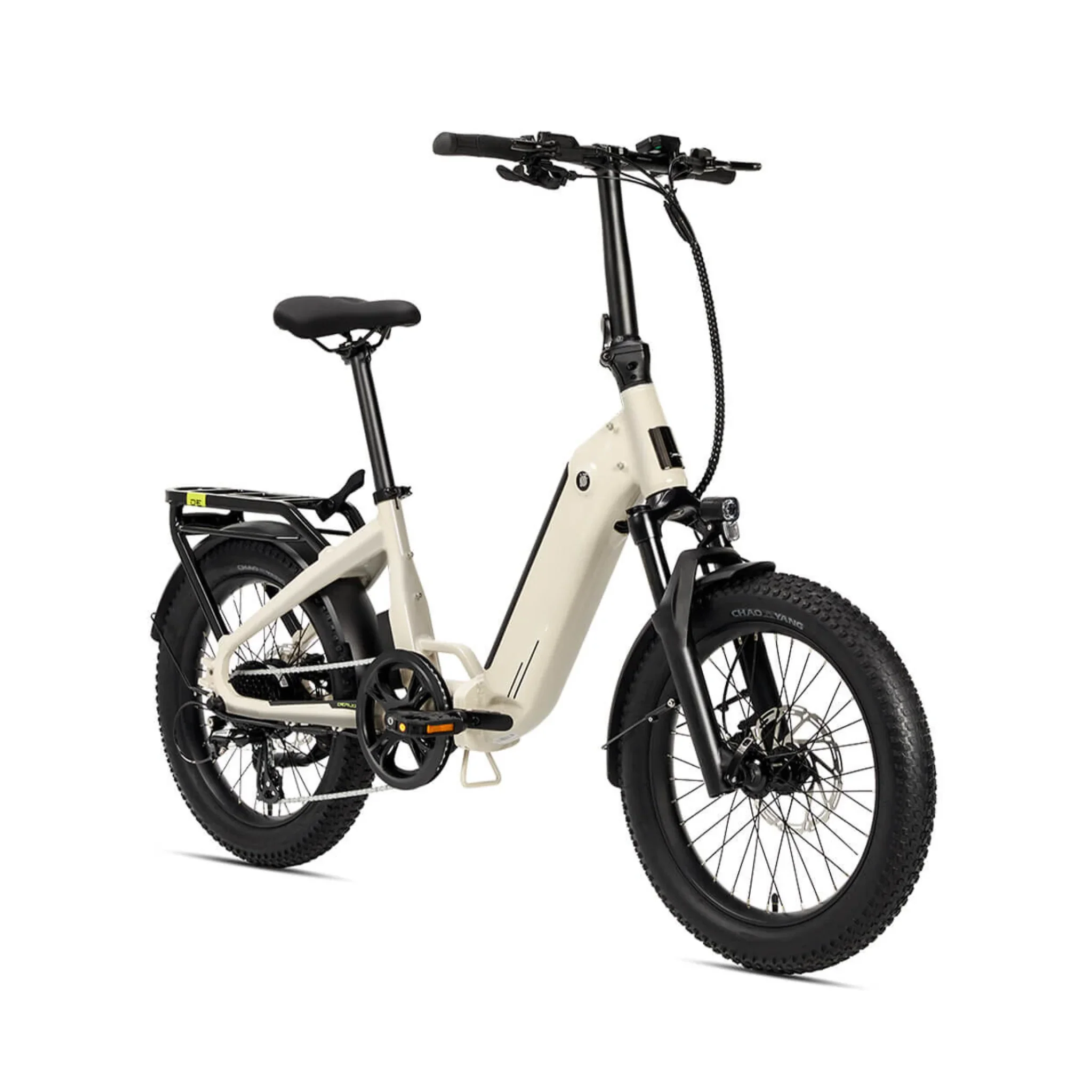MiniWave Assembly ManualUpdated 4 months ago
Pre-Assembly Tips
Welcome to the assembly manual for the Ridewave MiniWave Folding eBike. This guide will take you step-by-step through the process of assembling your new bike. Please read through the instructions carefully before starting to ensure a smooth assembly process. The bike arrives 95% assembled, with all electronics pre-installed. Preparing your Ridewave MiniWave Folding eBike is an exciting process! Here are some tips to ensure everything goes smoothly:
1. Keep a clean, open workspace for the assembly process.
2. Avoid using sharp tools near cables or wires to prevent accidental damage.
3. If you’re not confident assembling the bike, consider visiting a local bike shop for professional assistance.
4. The entire assembly process requires only a pair of scissors, a cable cutter, and a utility knife (Stanley knife) to remove protective packaging. For the actual assembly, a single 5mm Allen key—either the one provided in the toolkit or any standard 5mm Allen key—will suffice.
Contents of the box
The box includes the following items:
Ridewave MiniWave Folding eBike
Battery charger
Maintenance Grease
User Manual
Battery keys
Toolkit bag containing:
8/10mm Wrench
13/15mm Wrench
13/16mm Wrench
2.5mm Hex Key
3mm Hex Key
4mm Hex Key
5mm Hex Key
6mm Hex Key
7mm Hex Key
Step 1: Unpack the Bike
Opening the box: Carefully open the box using scissors or a Stanley knife. Avoid cutting too deeply to prevent damaging the bike or accessories. Remove the accessories box, which contains essential tools and components.
Getting bike ready for unfolding: After removing the accessories box, lift the bike out with assistance or cut the sides of the box to make it easier to access. Remove all protective materials—including foam, cardboard, zip ties, and tape. Take extra care not to damage any cables when cutting zip ties.
Step 2: Fold Out the Bike Frame
Folding-out bike: Engage the kickstand so the bike can stand on its own. Hold the rear of the bike frame behind the fold point and the front of the bike above the wheel forks. Gently unfold the bike until the front and rear wheels align.
Locking the fold: Secure the frame latch by pulling the small button towards the front and locking the latch firmly in place. This ensures the frame remains safely locked during rides.
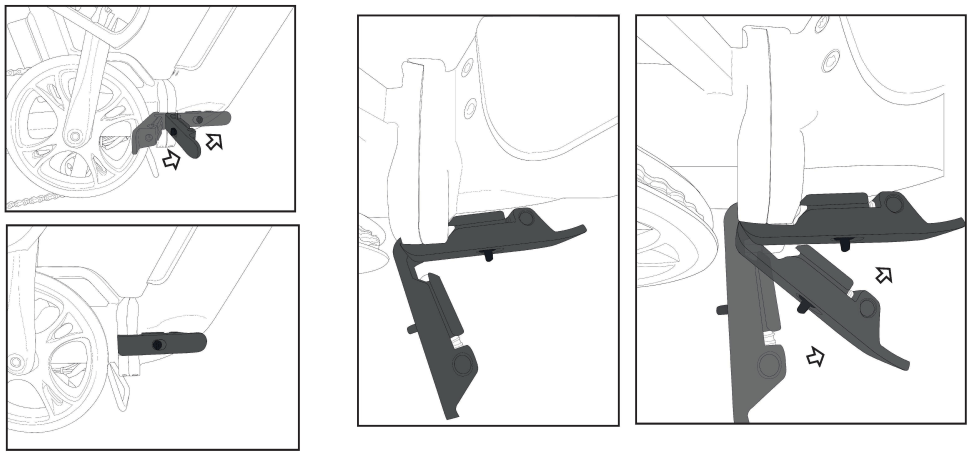
Step 3: Stem/Handlebar Assembly
To assemble the handlebars:
1. Use a 5mm Allen key to unscrew the stem cap bolt.
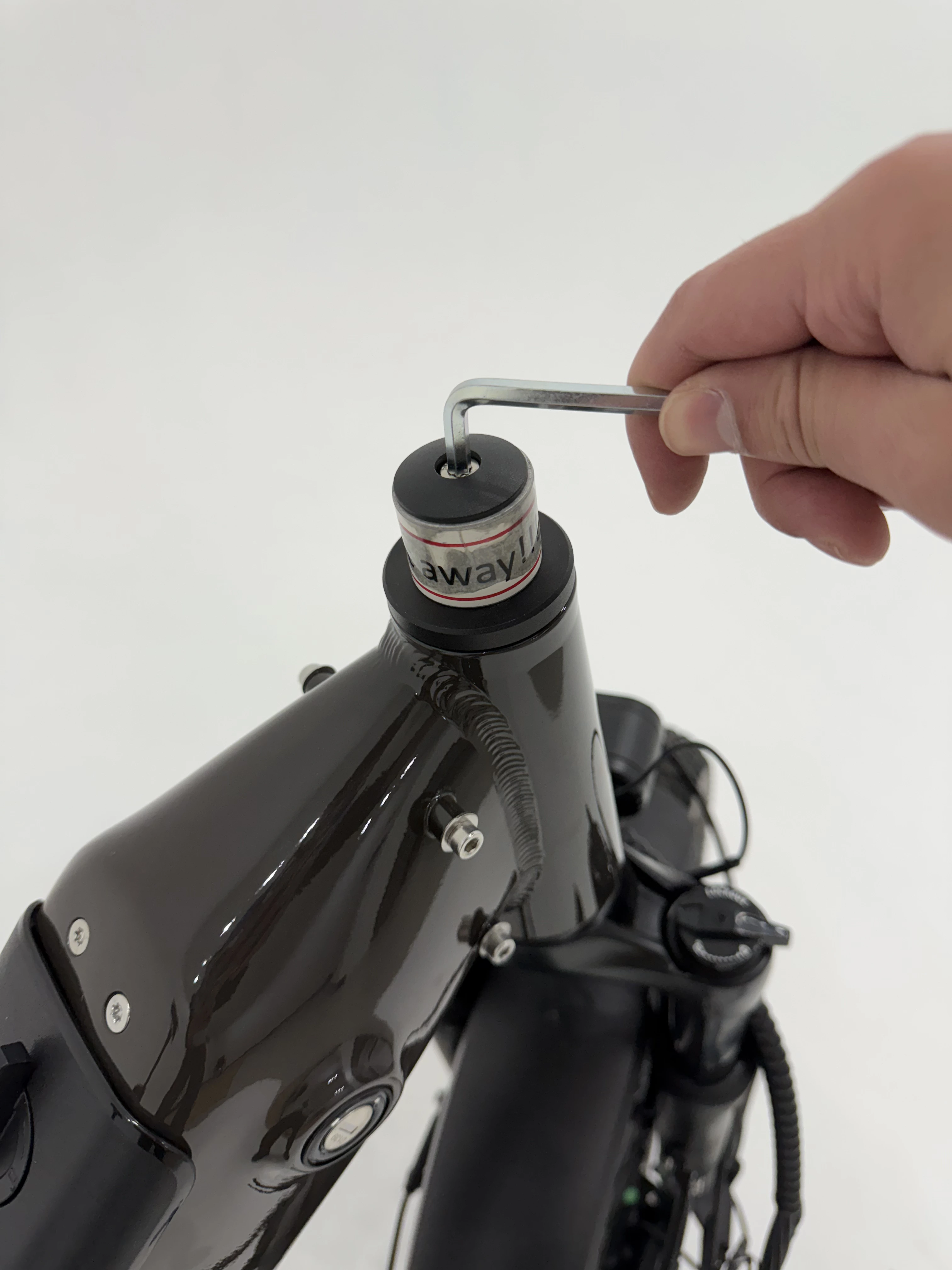
- 2. Remove the stem cap and lift off the silver stem spacer.
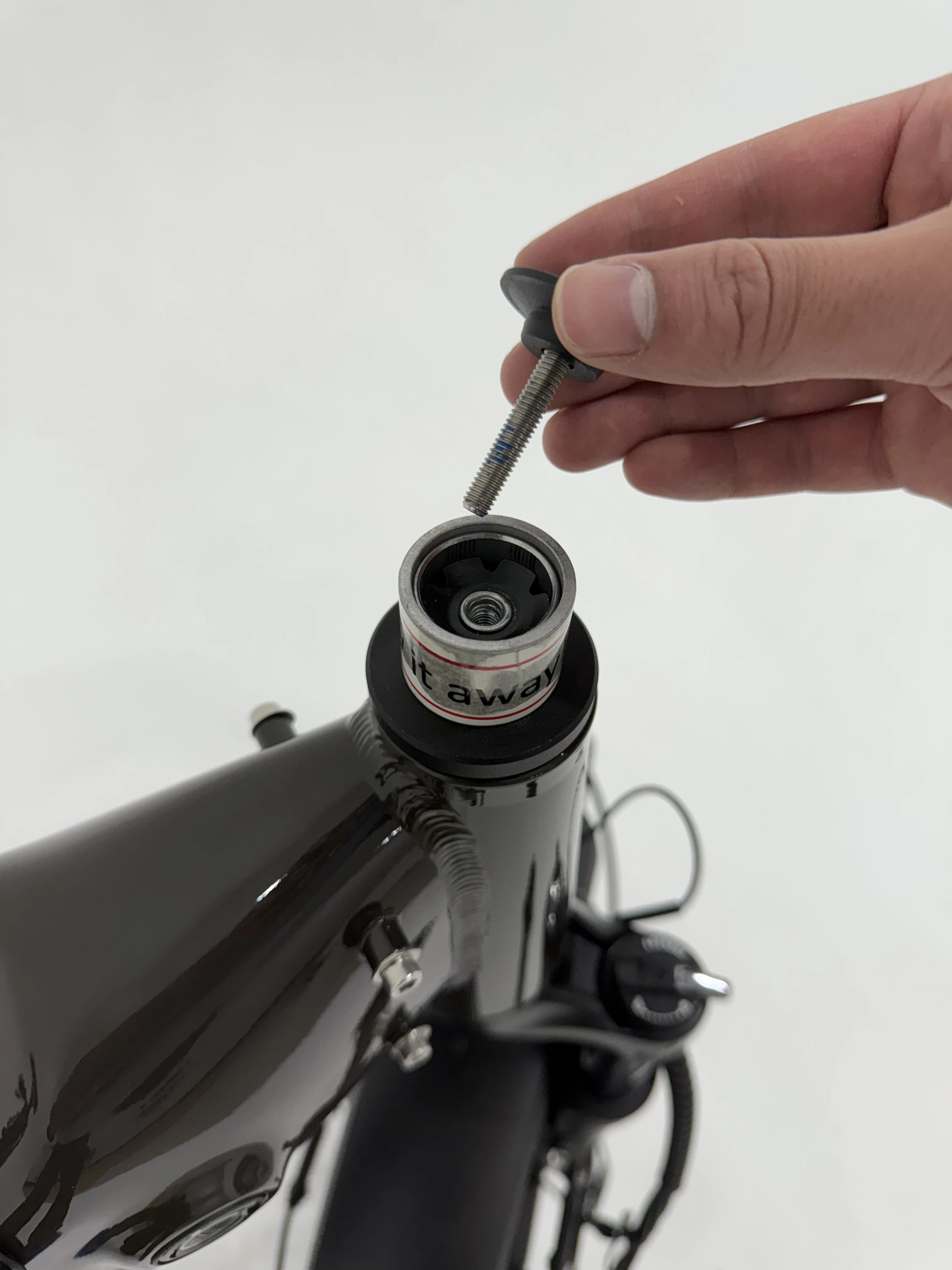
- 3. You won’t need the silver stem spacer, but keep the stem cap and bolt for later use.
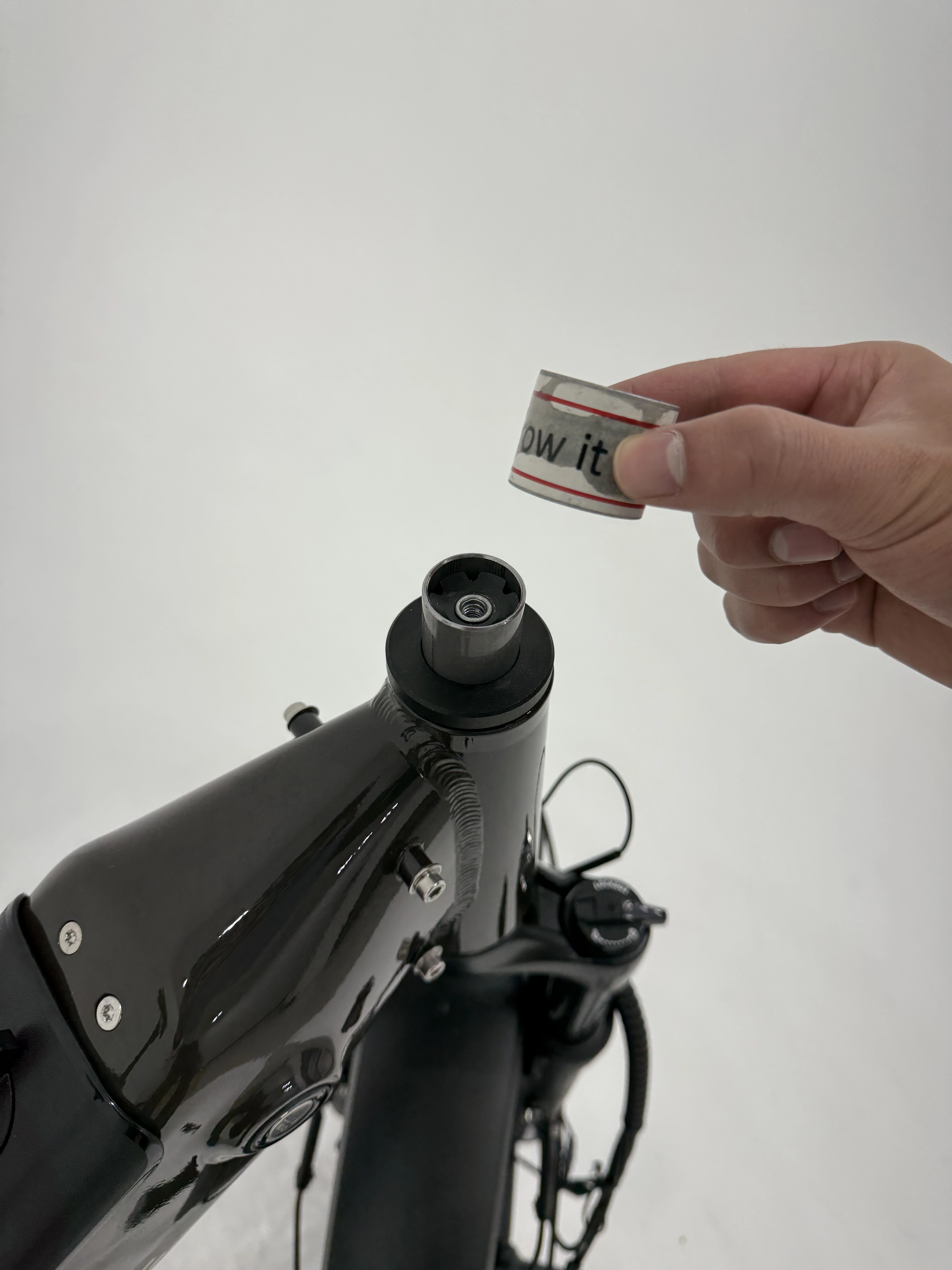
4. Slide the stem and handlebars down into the top opening of the headtube, making sure all cables are running forward in the same direction.
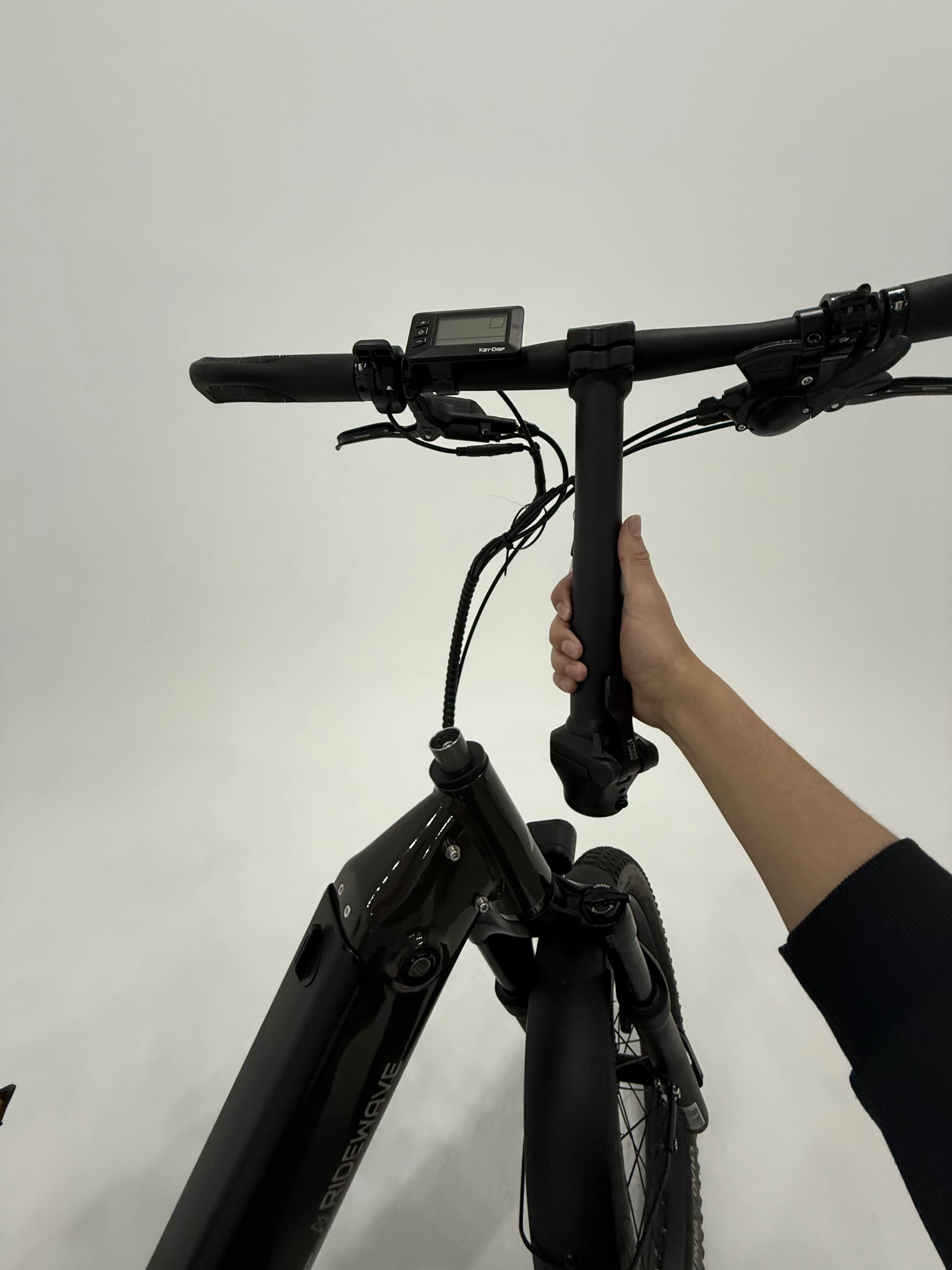
- 5. Release the stem latch by pushing in the safety pin and moving the latch downwards to disengage it. Then press the button on the opposite side to fold the handlebars downward.
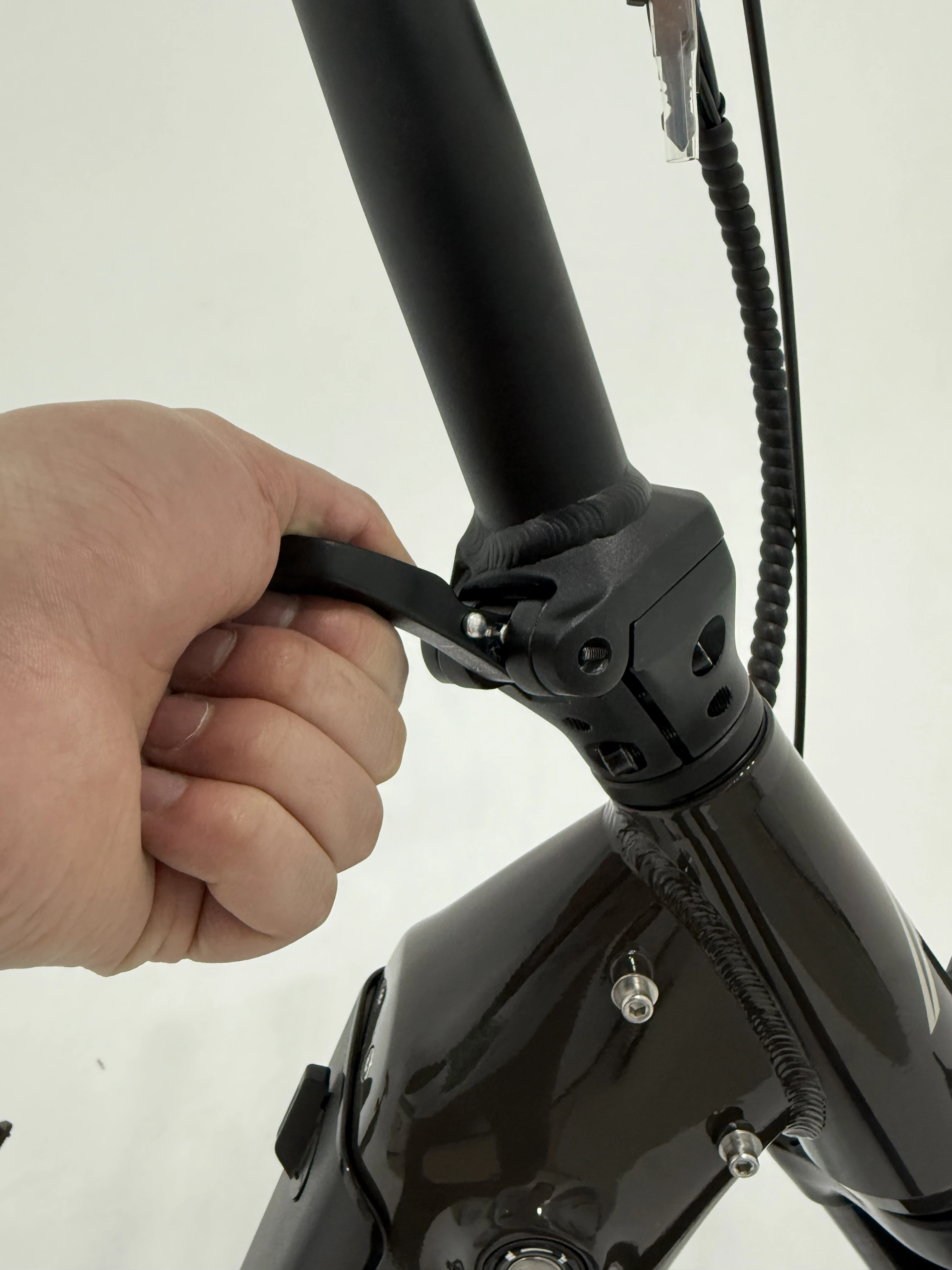
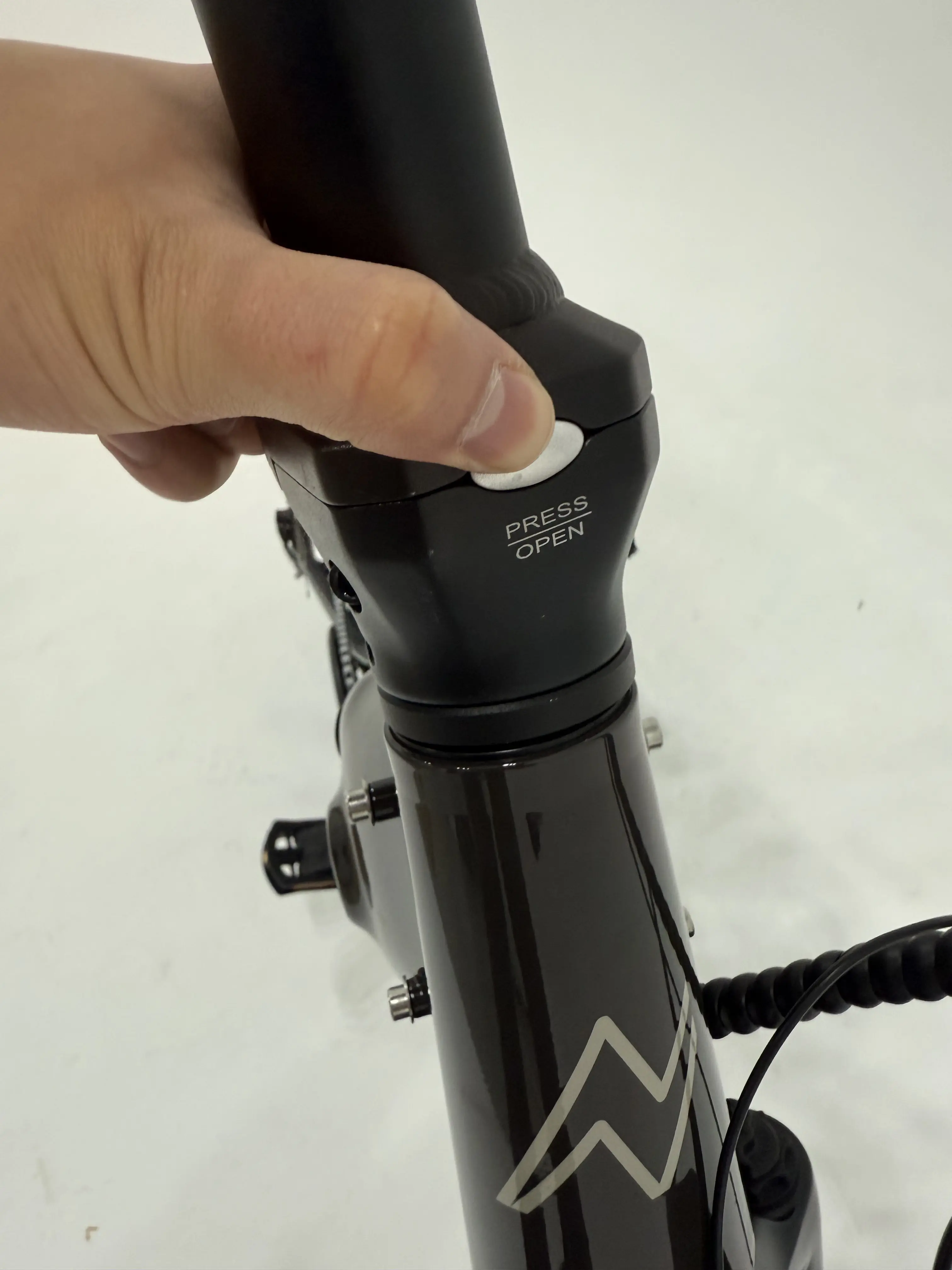
- 6. Insert the stem cap bolt and tighten it gently to 5nm using the 5mm Allen key. Make sure the forks are centred in the headtube, hold the forks in place while you tighten the stem cap bolt if they are shifting. Refer to 1:58 in our assembly tutorial video or watch here.
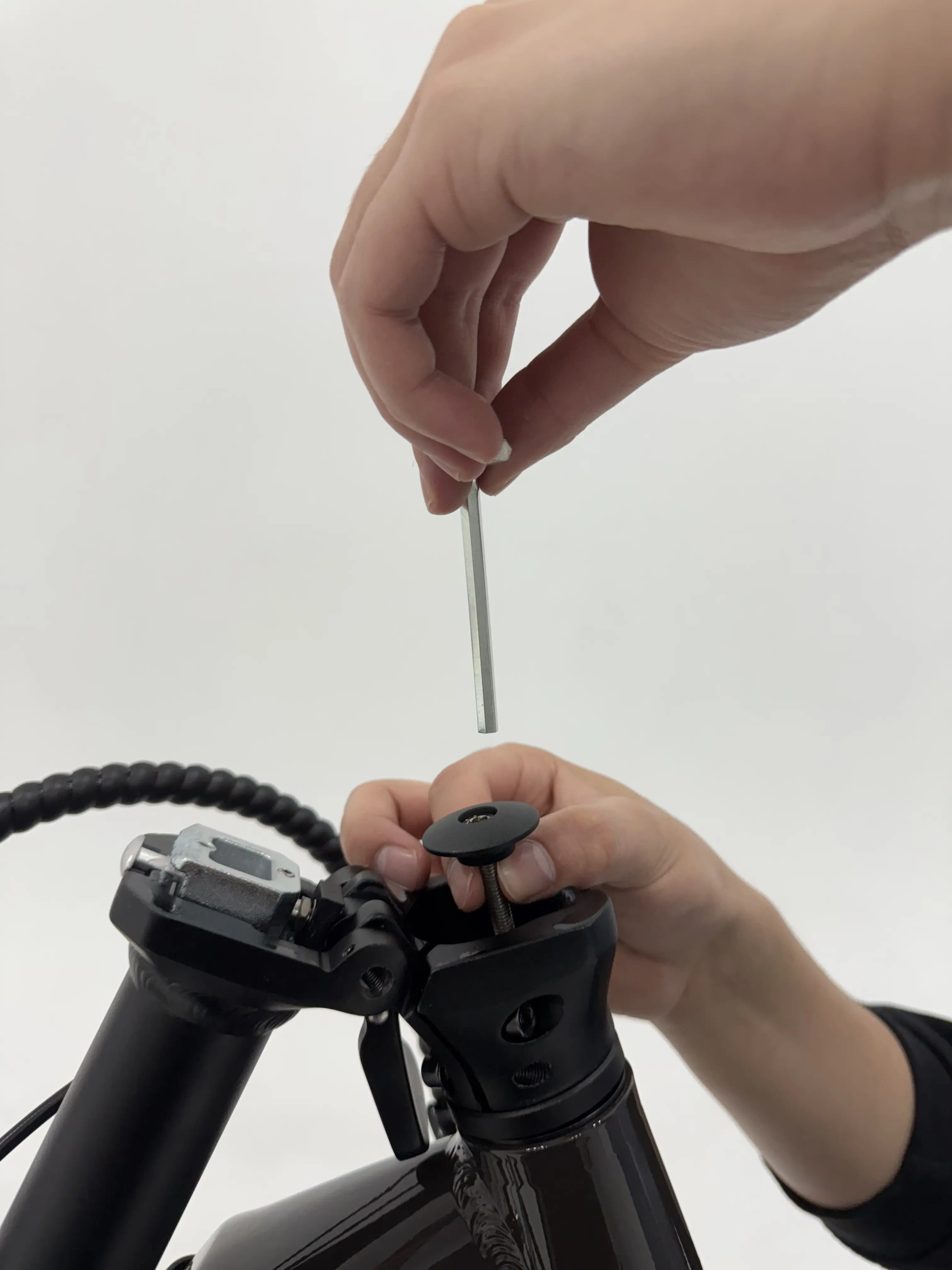
⚠️ Important: As you tighten the stem cap bolt, confirm that the fork and headtube are centred and there are no visible gaps above or below the headtube!
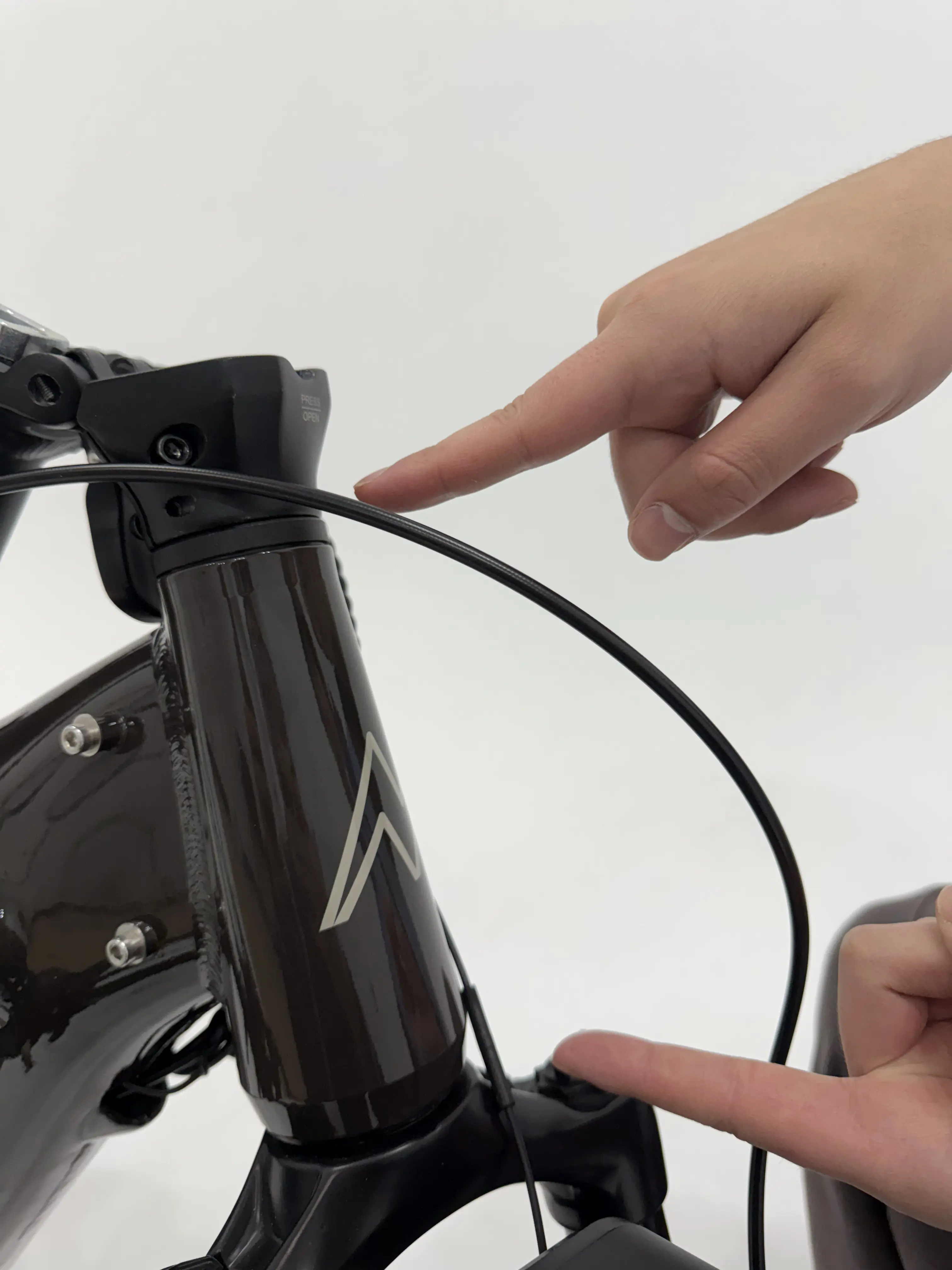
- 7. Unfold the handlebars and stem, then adjust them so the handlebars are straight and in line with the front wheel. Make fine adjustments to ensure precise alignment. It may help to loosen the two bolts on the side of the headstem and hold the wheel in place with your legs while adjusting the angle of the handlebars so they are aligned with one another.
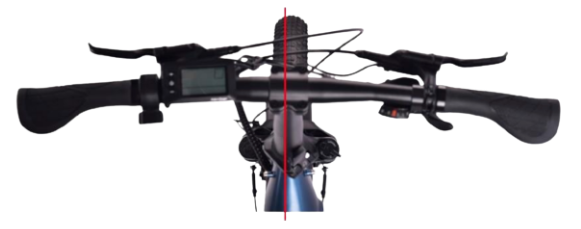
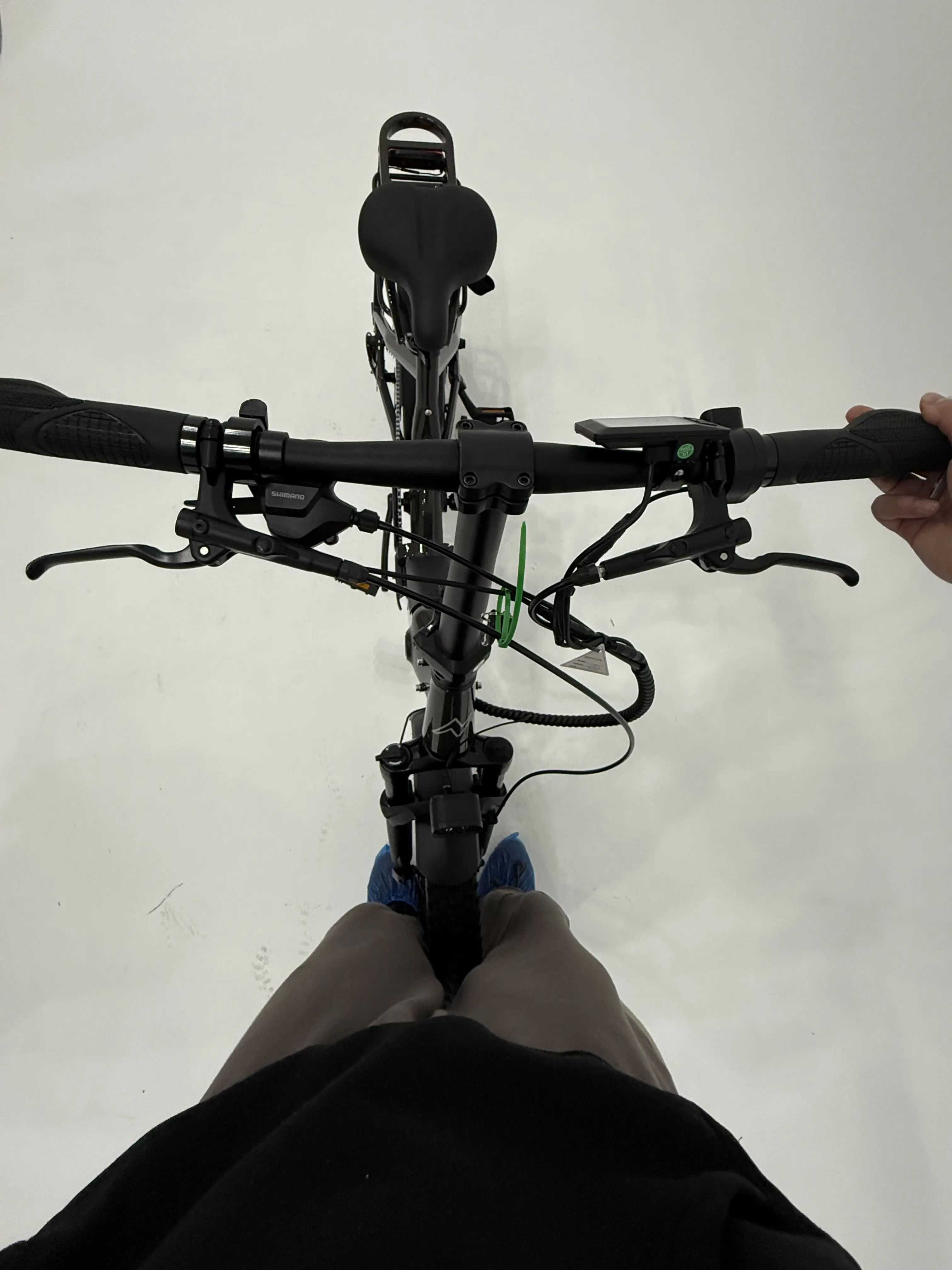
- 8. When the alignment is correct, fully unfold the stem and tighten the stem cap bolt to 7nm to lock everything securely.
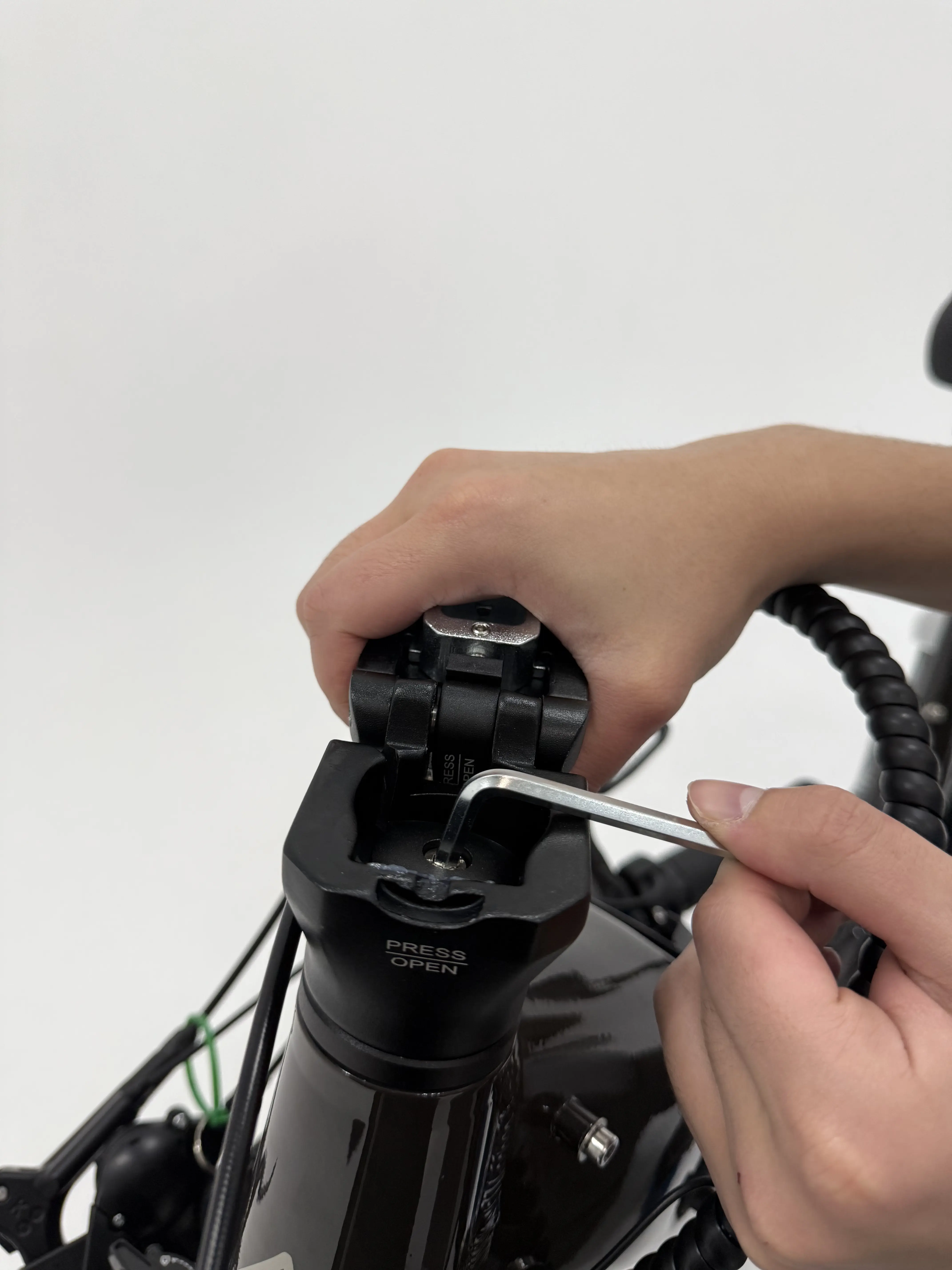
- 9. Next, use the 5mm Allen key to evenly tighten the two side bolts. Alternate between bolts, tightening each a little at a time for balanced pressure to 7nm.
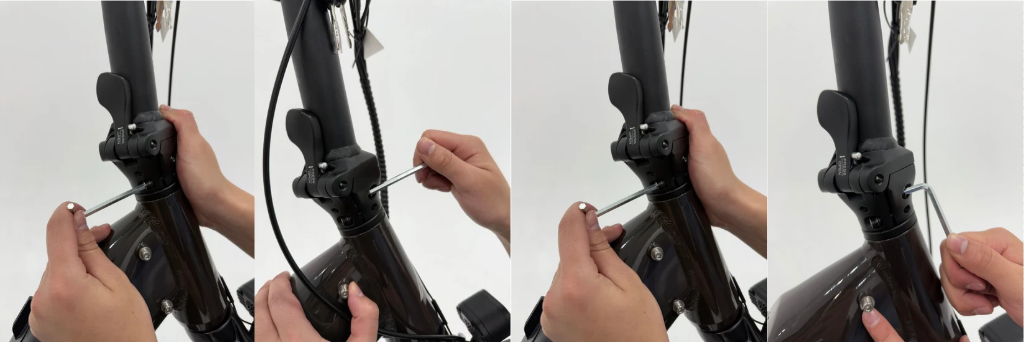
- 10. Finally, check that the stem is firmly seated by holding the left brake lever and pushing the bike forward. Look for any looseness or movement between the fork and the headtube. If any play is detected, remove and reseat the stem on the headtube and repeat tightening as shown in step 6.
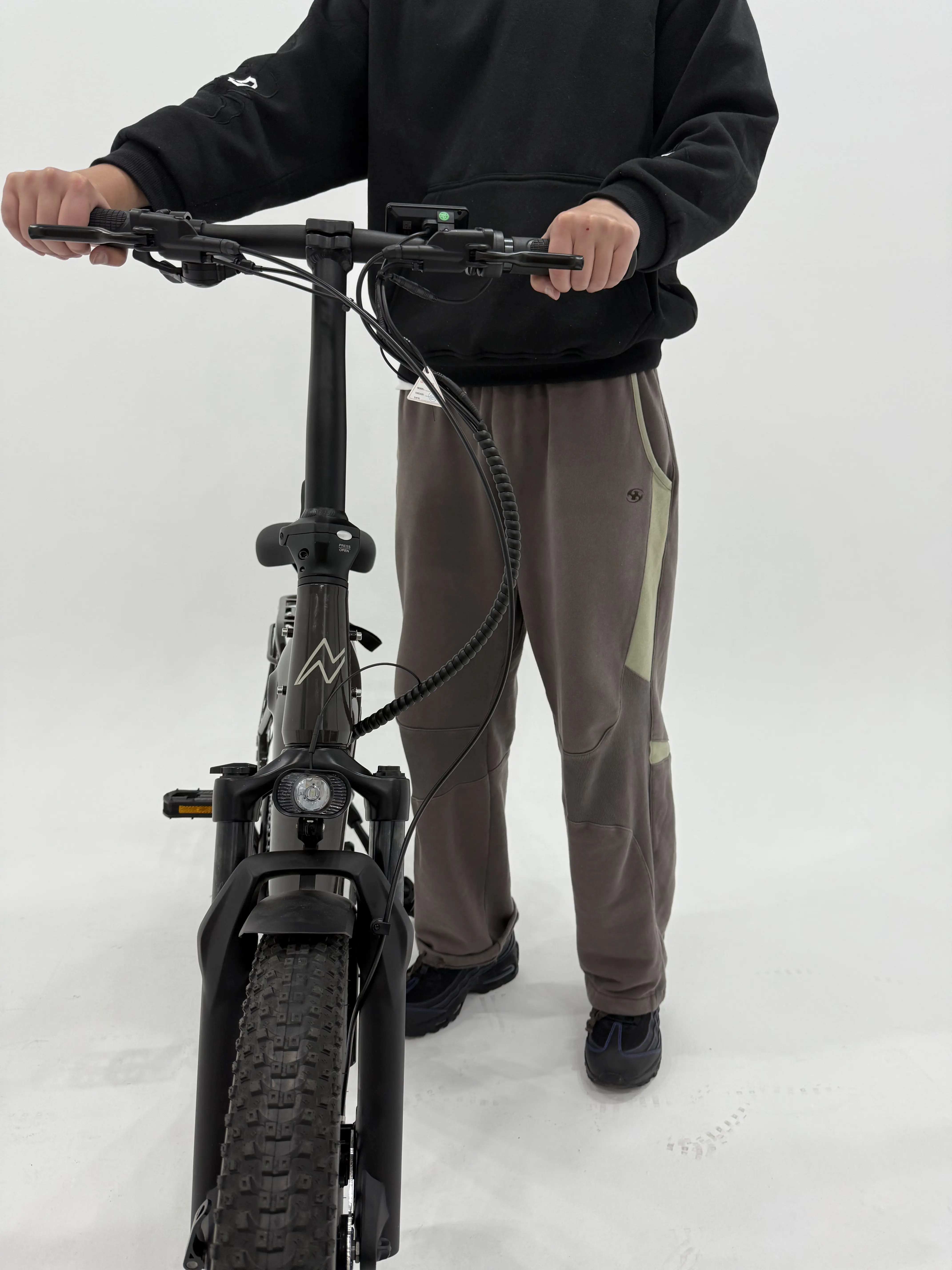
⚠️ WARNING: It is critical to fully tighten the stem cap to prevent the handlebars from shifting and to secure the compression cap, ensuring the fork is correctly installed. This procedure should only be done by someone experienced in bicycle assembly.
Step 4: Unfold the Pedals
To ready the pedals:
1. Fold the pedal upwards and rotate it until it locks in place horizontally. The outer, folding part of the pedal, will need to be pushed towards the crankset so that the pedal will sit perfectly flat in one-piece.
2. Repeat the process for the other side. Ensure both pedals are securely installed.
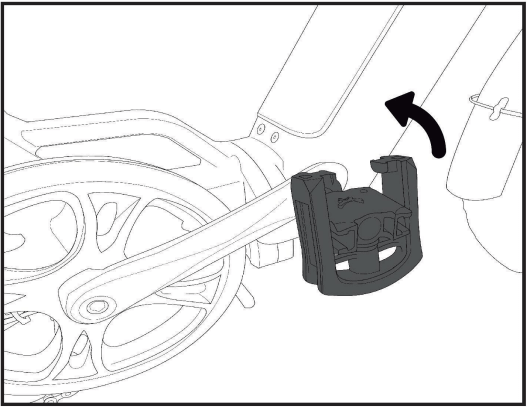
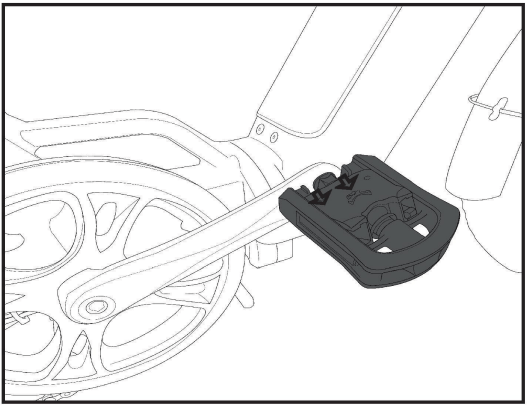
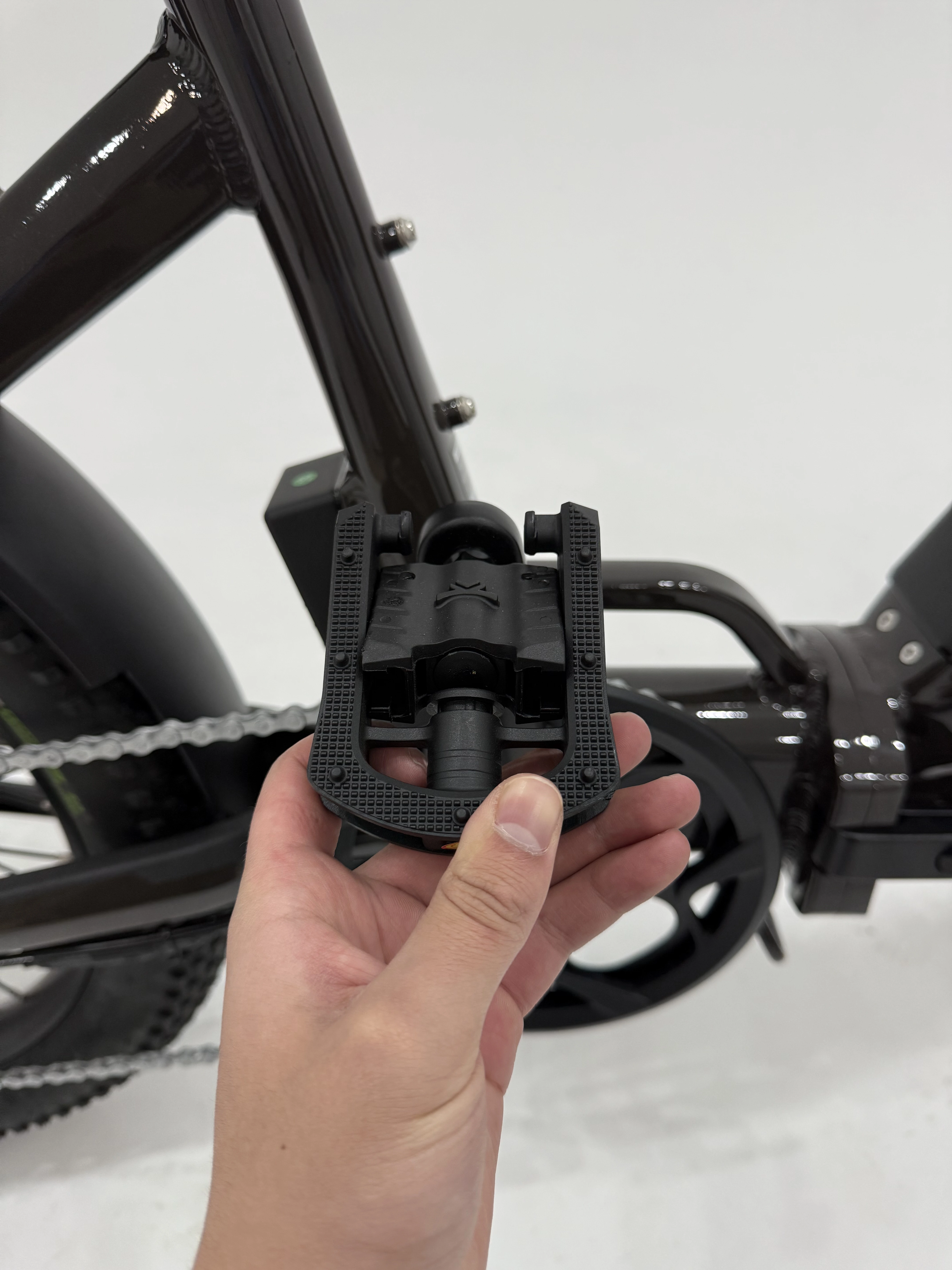
Step 5: Pumping the Tyres
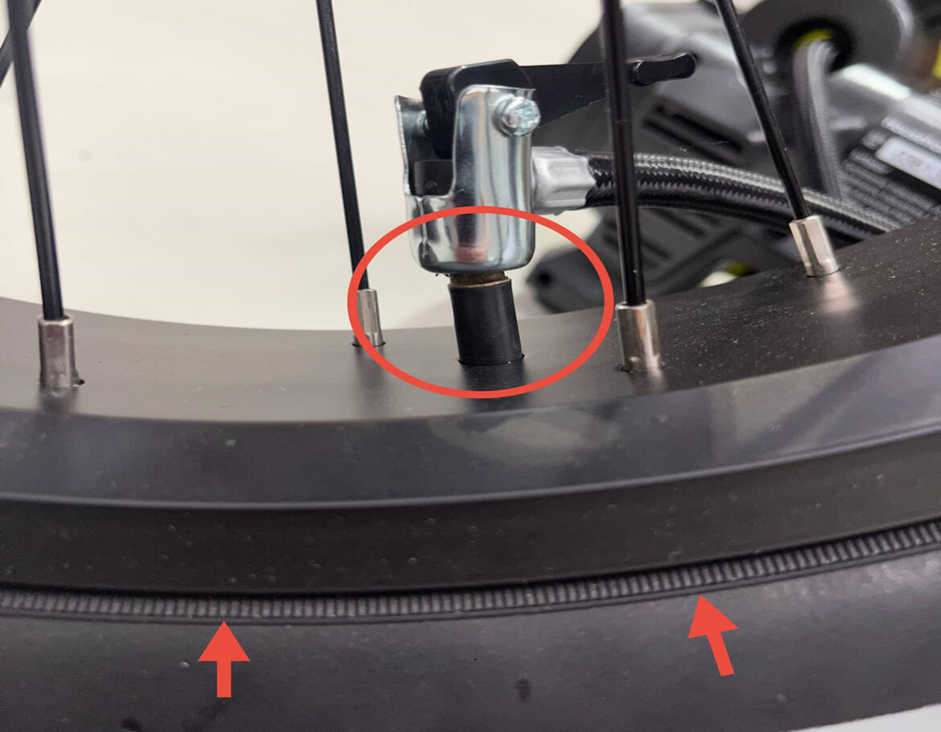
- When preparing to pump the tyres:
- Use a tyre pump to inflate the tyres to the recommended PSI listed on the side of the tyres. For the MiniWave, this is a maximum inflation pressure of 35 PSI.
- Inflating tyres: Pump both the front and rear tyres to the pressure specified on the tyre sidewall. For the MiniWave, the recommended PSI is between 5-35.
- For a Softer Ride: We recommend a PSI range of 5-20 for a smoother, more comfortable ride. This pressure is ideal for the MiniWave and best suited for riders who frequently encounter uneven or off-road terrain.
- For a Firmer Ride: If you prefer a sturdier and more responsive feel, aim for a PSI range of 20-35. Higher pressure reduces the frequency of pumping and is better suited for consistently flat terrain, such as urban roads.
- Finding Your Ideal PSI: Experiment with different pressure levels in the front and rear tires until you discover what feels best for your riding style and terrain. Adjust as needed to achieve your desired balance of comfort and performance.
- Use a tyre pump to inflate the tyres to the recommended PSI listed on the side of the tyres. For the MiniWave, this is a maximum inflation pressure of 35 PSI.
Important:
- While inflating, pause occasionally to check that the tyre bead (indicated with arrows) is properly seated around the rim.
- Ensure that the pumping nozzle is correctly attached to the inner tube valve, air should escape before the lever is adjusted. (Proper attachment circled in red)
- If the bead starts to rise unevenly, deflate the tyre slightly and press the bead back into place before continuing.
- Ensure the tyre bead line (a thin moulded line near the sidewall) is evenly positioned just above the rim on both sides.
- If any part of the inner tube becomes exposed during inflation, stop immediately as this can cause the tube to burst.
Properly seating the bead ensures safe and consistent tyre inflation.
Final Checks
Before riding your Ridewave MiniWave Folding eBike, perform the following checks:
- Ensure all bolts are tightly fastened.
- Test the folding mechanisms to ensure they are secure.
- Check the tire pressure and inflate as needed.
Congratulations — your Ridewave MiniWave Folding eBike is now fully assembled and ready to ride. Enjoy your bike, and don’t hesitate to contact our support team if you need any further assistance.
